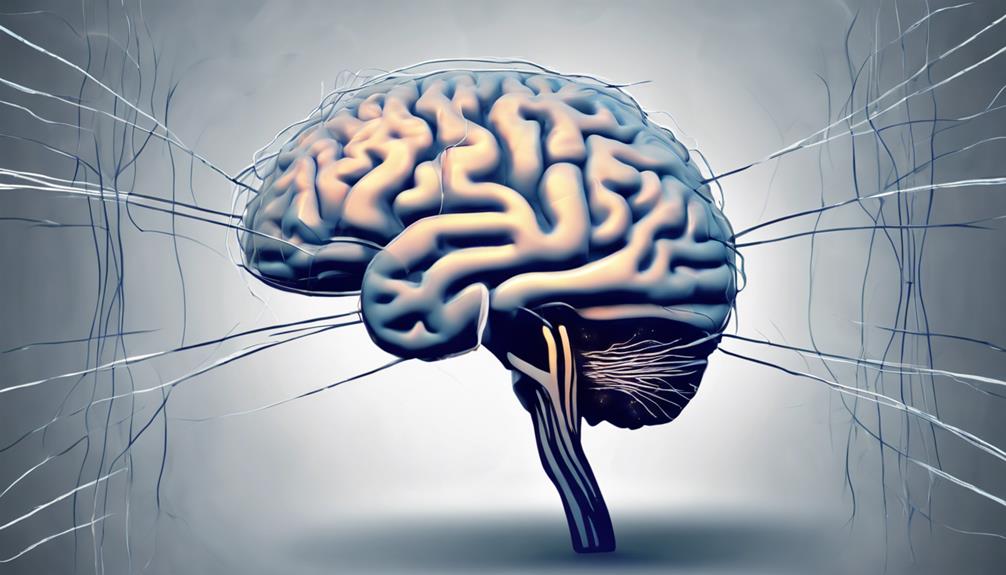Subliminal hypnosis boundaries involve ethical use of suggestion techniques, transparency in messaging, respect for autonomy, avoidance of coercion, safeguards against harm, professional integrity, and informed consent. Ethics play a crucial role in defining these boundaries, ensuring individuals' autonomy, and protecting against unintended consequences. Transparency in communication builds trust, while avoiding manipulation upholds ethical standards. Safeguards protect against potential harm, emphasizing practitioners' responsibility and adherence to ethical guidelines. Delving deeper into these principles reveals a comprehensive framework for responsible subliminal hypnosis practices.
Ethical Use of Suggestion Techniques

The ethical use of suggestion techniques in subliminal hypnosis is a crucial aspect that requires careful consideration and adherence to established guidelines and principles. When delving into the realm of subconscious influence, ethical considerations become paramount due to the profound psychological impact these techniques can have on individuals.
Ethical dilemmas may arise when considering the extent to which suggestions can be implanted in a person's mind without their explicit consent or awareness. It is essential to navigate these ethical considerations with caution, ensuring that individuals are not manipulated or coerced into behaviors or thoughts that go against their values or beliefs.
Psychologically, the use of suggestion techniques in subliminal hypnosis can tap into deep-seated emotions and desires, potentially leading to profound changes in behavior and mindset. However, it is critical to uphold ethical standards by respecting individuals' autonomy and ensuring that any suggestions provided align with their best interests.
Striking a balance between harnessing the power of subconscious influence and upholding ethical principles is key in the practice of subliminal hypnosis.
Transparency in Messaging
In subliminal hypnosis, ensuring transparency in messaging is essential to establish trust and maintain ethical integrity in the communication process. Ethical considerations play a significant role in the use of hidden messages to influence the subconscious mind.
Without transparency, individuals may be unaware of the true intentions behind the messages they are exposed to, potentially leading to ethical dilemmas and concerns regarding consumer protection.
It is crucial for practitioners of subliminal hypnosis to disclose the presence of any hidden messages or suggestions within their communication to respect consumer autonomy and prevent subconscious influence without consent.
Respecting Individual Autonomy

Respecting individual autonomy is a fundamental principle in ethical communication practices, especially in contexts where subconscious influence is at play. When considering subliminal hypnosis techniques, it is crucial to uphold individual rights and personal freedom.
In the realm of subliminal messaging, where the subconscious mind is targeted without the individual's conscious awareness, the risk of infringing upon autonomy becomes apparent. Individual autonomy encompasses the right to make one's own choices and decisions free from external manipulation or coercion.
In the context of subliminal hypnosis, it is essential to acknowledge and respect these principles. Failure to do so could lead to ethical concerns regarding the infringement of personal freedom and the manipulation of individuals without their explicit consent.
Avoiding Manipulation and Coercion
Upholding ethical standards in communication practices involving subliminal hypnosis necessitates a steadfast commitment to avoiding manipulation and coercion. Within the realm of subliminal messaging, it is crucial to steer clear of techniques that can potentially manipulate individuals without their conscious awareness.
Ethical advertising principles underscore the importance of transparency and honesty in all forms of communication, including those involving hidden persuasion methods.
Subconscious influence through marketing tactics should be approached cautiously to ensure that individuals are not coerced into making decisions against their will. The use of subliminal messages in marketing campaigns raises concerns about the potential for exploitation and manipulation.
By adhering to ethical guidelines, practitioners can mitigate the risks associated with subconscious messaging and uphold the integrity of their communication practices.
In navigating the boundaries of subliminal hypnosis, it is essential to prioritize respect for individual autonomy and avoid tactics that may infringe upon personal agency.
Safeguards Against Unintended Harm

Maintaining vigilance against inadvertent harm is imperative when engaging in communication practices involving subliminal hypnosis, particularly in safeguarding against unintended consequences. The use of subliminal messages can have a powerful impact on the subconscious mind, influencing thoughts and behaviors without individuals being consciously aware. This subconscious influence raises concerns regarding psychological safety and the potential for unintended harm.
To mitigate the risk of unintended consequences, it is essential to consider ethical considerations when utilizing subliminal hypnosis techniques. Practitioners must prioritize the well-being of individuals and ensure that any use of subliminal messaging is done with the utmost care and respect for the individual's autonomy.
Transparency and informed consent play a crucial role in maintaining ethical standards and safeguarding against potential harm.
Professional Responsibility and Integrity
Professional practitioners of subliminal hypnosis are entrusted with the responsibility to uphold the highest standards of professional integrity in their practice. Adhering to strict ethical guidelines ensures that practitioners prioritize client well-being above all else. Practitioner accountability plays a vital role in maintaining trust and ensuring that subliminal hypnosis is conducted in a safe and ethical manner.
The moral implications of subliminal hypnosis underscore the importance of practitioners acting in the best interests of their clients. Upholding ethical standards not only safeguards clients from potential harm but also promotes a positive therapeutic environment.
Practitioners must constantly evaluate their methods and decisions through the lens of ethical guidelines to ensure that they are consistently acting in a manner that serves the well-being of their clients.
Informed Consent and Boundaries

A fundamental aspect of ethical practice in subliminal hypnosis involves the establishment of clear boundaries and obtaining informed consent from clients prior to any therapeutic interventions. Informed consent is a crucial component in ensuring that clients are fully aware of the nature of the therapy, potential risks, and benefits involved.
It is essential for practitioners to explain the techniques used in subliminal hypnosis, the purpose of the therapy, and what clients can expect during and after the sessions.
Ethical boundaries play a significant role in maintaining the trust and integrity of the therapeutic relationship. Practitioners must establish clear guidelines regarding the scope of the therapy, confidentiality, and the limits of their professional role.
It is important to address any potential conflicts of interest and maintain a professional demeanor at all times.
Frequently Asked Questions
Can Subliminal Hypnosis Be Used for Entertainment Purposes?
Subliminal hypnosis can be utilized for entertainment purposes, yet its application raises ethical implications and legal concerns due to potential psychological impacts. Balancing entertainment value with responsible usage is paramount in such practices.
Is Subliminal Hypnosis a Form of Mind Control?
Subliminal hypnosis raises questions about its potential as a form of mind control due to ethical concerns and psychological effects. Understanding the potential risks and legal implications is crucial in evaluating the use of this technique responsibly.
Are There Any Age Restrictions for Undergoing Subliminal Hypnosis?
When considering age restrictions for subliminal hypnosis, ethical considerations must prioritize the cognitive development and psychological impact on minors. Parental consent becomes crucial to navigate these boundaries, ensuring the practice aligns with ethical standards and respects individual development stages.
Can Subliminal Hypnosis Help With Physical Health Issues?
Subliminal hypnosis can be a useful tool in enhancing mental wellness by targeting subconscious beliefs related to physical health issues. While not a standalone treatment, it may aid in pain management through influencing the mind-body connection.
How Long Does the Effect of Subliminal Hypnosis Last?
The duration of the effect of subliminal hypnosis varies based on individual responsiveness and the specific goal. Short term effectiveness can be seen after repeated exposure, with results often fading if frequency of exposure decreases.
Conclusion
In conclusion, the boundaries of subliminal hypnosis must be carefully considered and upheld to ensure ethical practice.
Transparency in messaging, respect for individual autonomy, avoidance of manipulation and coercion, safeguards against unintended harm, professional responsibility and integrity, and informed consent are essential aspects to uphold in the use of suggestion techniques.
Adherence to these boundaries is crucial in maintaining the ethical standards and integrity of subliminal hypnosis practices.








































